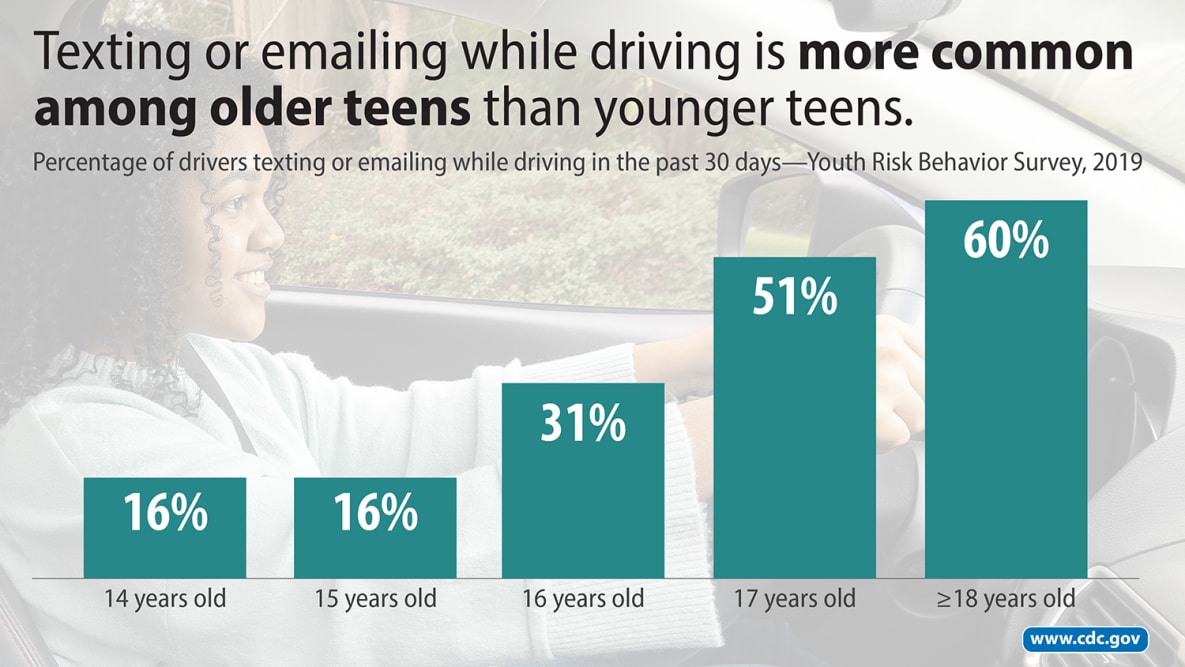Key points
- Some groups are at higher risk of driving distracted than other groups
- Among fatal crashes involving distracted drivers in the U.S. in 2019, a higher percentage of drivers ages 15–20 were distracted than drivers age 21 and older.
Who's at risk
Some groups are more at risk for distracted driving.
Young adult and teen drivers
- Among fatal crashes involving distracted drivers in the U.S. in 2019:
- A higher percentage of drivers ages 15–20 were distracted than drivers age 21 and older.
- Among these younger drivers, 9% of them were distracted at the time of the crash.1
- A higher percentage of drivers ages 15–20 were distracted than drivers age 21 and older.
- A 2019 survey2 of U.S. high school students found:
- 39% of high school students who drove in the past 30 days texted or emailed while driving on at least one of those days.3
- Texting or emailing while driving was more common among older students than younger students (see figure below) and more common among White students (44%) than Black (30%) or Hispanic students (35%).3
- Texting or emailing while driving was as common among students whose grades were mostly As or Bs as among students with mostly Cs, Ds, or Fs.3
- Students who texted or emailed while driving were also more likely to report other transportation risk behaviors. They were:
- more likely to not always wear a seat belt;
- more likely to ride with a driver who had been drinking alcohol; and
- more likely to drive after drinking alcohol.3
- more likely to not always wear a seat belt;
- 39% of high school students who drove in the past 30 days texted or emailed while driving on at least one of those days.3

Source: National Highway Traffic Safety Administration, 2019

Content Source:
National Center for Injury Prevention and Control
- National Highway Traffic Safety Administration. (2021). Traffic Safety Facts Research Note: Distracted Driving 2019 (DOT HS 813 111). Department of Transportation, Washington, DC: NHTSA. Accessed 8 February 2022.
- Centers for Disease Control and Prevention. Youth Risk Behavior Surveillance System. Accessed 8 February 2022.
- Yellman, M.A., Bryan, L., Sauber-Schatz, E.K., Brener, N. (2020). Transportation Risk Behaviors Among High School Students — Youth Risk Behavior Survey, United States, 2019. MMWR Suppl,69(Suppl-1),77–83.
